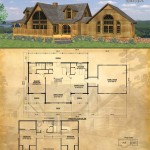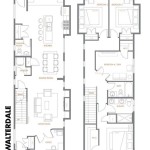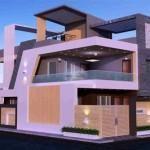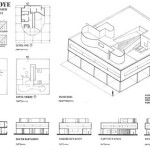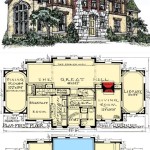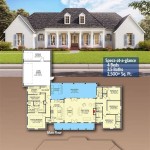```html
Hip Roof House Plans with Garage: A Comprehensive Guide
Hip roofs are a popular architectural choice for residential buildings, offering a blend of aesthetic appeal and functional benefits. Characterized by slopes on all four sides that meet at a ridge, a hip roof offers enhanced stability and improved water runoff compared to gable roofs. Incorporating a garage into a hip roof house plan requires careful consideration to maintain structural integrity, optimize space utilization, and ensure a cohesive design. This article will explore the key aspects of hip roof house plans with garages, covering design considerations, structural implications, and aesthetic integration.
Understanding the Advantages of Hip Roofs
The primary advantage of a hip roof lies in its superior resistance to wind. The sloping sides provide a more aerodynamic profile compared to the flat vertical surfaces of a gable roof. This resistance translates to greater structural stability, particularly in regions prone to high winds or hurricanes. The symmetrical design of a hip roof distributes wind forces evenly across the structure, minimizing stress points and reducing the risk of damage. Another significant benefit is enhanced water drainage. The slopes on all sides allow for efficient shedding of rainwater and snow, preventing accumulation that could lead to leaks or structural damage. This is particularly important in areas with heavy precipitation. Furthermore, hip roofs offer a more uniform appearance compared to gable roofs, which can contribute to a more aesthetically pleasing overall design. The consistent slopes create a sense of balance and harmony.
While hip roofs offer numerous advantages, it's crucial to acknowledge potential drawbacks. Construction of a hip roof can be more complex and require more materials compared to a simpler gable roof. This translates to higher construction costs. The added complexity also means that skilled labor is essential to ensure proper execution and structural integrity. However, the long-term benefits in terms of durability and reduced maintenance costs often outweigh the initial investment.
Key Considerations for Integrating a Garage into a Hip Roof Design
Integrating a garage into a hip roof house plan requires careful planning and design to ensure seamless integration and optimal functionality. Several factors must be considered, including the garage's intended purpose (single-car, double-car, or multi-car), its location relative to the house (attached, detached, or integrated), and the desired architectural style. When the garage is attached or integrated, the hip roof design must be extended to cover the garage structure, maintaining a consistent roofline and aesthetic. This may require modifications to the roof's pitch and slope to accommodate the garage's dimensions. Structural considerations are paramount. The garage's supporting walls must be adequately reinforced to bear the load of the extended hip roof. Proper engineering is crucial to ensure that the roof structure can withstand wind loads, snow loads, and other environmental factors. The garage door opening also requires careful attention. The header above the garage door must be appropriately sized and supported to prevent sagging or structural failure. Adequate ventilation is essential to prevent moisture buildup and condensation within the garage, particularly in colder climates. This can be achieved through vents in the roof, walls, or garage door.
When designing a hip roof house plan with an attached garage, consider how the garage's roofline will connect to the main house roof. A common approach is to extend the hip roof over the garage, creating a continuous and unified roof structure. This requires careful planning to ensure that the roof slopes are consistent and that the transition between the house and garage is seamless. Another option is to create a separate hip roof for the garage that connects to the main house roof at a different elevation. This can add visual interest to the design but requires careful attention to flashing and waterproofing to prevent leaks.
Integrating the garage aesthetically is also important. Matching the siding, trim, and windows of the garage to those of the main house creates a cohesive and harmonious exterior. The garage door should also complement the overall architectural style of the house. Consider using a garage door with a design that echoes the house's architectural details, such as raised panels, windows, or decorative hardware.
Design Options and Architectural Styles for Hip Roof House Plans with Garages
Hip roof house plans with garages offer a wide range of design options and can be adapted to various architectural styles. One popular option is the Craftsman style, which features low-pitched hip roofs, wide overhanging eaves, exposed rafters, and decorative brackets. A garage seamlessly integrated into a Craftsman-style hip roof house plan typically features a similar roof pitch and detailing, creating a unified and cohesive design. Another common style is the Ranch house, characterized by its single-story layout, low-pitched hip roof, and attached garage. Ranch houses often feature large windows, open floor plans, and a focus on outdoor living. The garage is typically integrated into the house's footprint, with the hip roof extending over both the house and garage. Traditional styles, such as Colonial or Georgian, can also incorporate hip roofs. In these cases, the hip roof is often steeper in pitch, and the garage may be detached or attached to the side of the house. The garage's design should complement the main house's architectural details, such as symmetrical facades, columns, and decorative moldings. Modern and contemporary house plans can also feature hip roofs. These styles often incorporate clean lines, minimalist detailing, and large expanses of glass. The garage may be integrated into the house's design or detached, with a hip roof that complements the overall architectural style. The choice of materials can also play a significant role in the overall design. Brick, stone, wood siding, and stucco are all common choices for hip roof houses with garages. The material selection should complement the architectural style and the surrounding landscape.
Beyond architectural style, the interior layout of the house should also be considered in relation to the garage. Direct access from the garage into the house, often through a mudroom or laundry room, is a common and convenient feature. This provides a sheltered entry point during inclement weather and allows for easy transfer of groceries or other items. Consider the placement of windows and doors in the garage to maximize natural light and ventilation. Also, ensure that the garage is properly insulated to maintain a comfortable temperature and reduce energy costs.
When selecting a hip roof house plan with a garage, it's essential to work with an experienced architect, home designer, or builder. They can provide valuable insights into the design process, help you navigate the various options, and ensure that the final design meets your specific needs and budget. They can also ensure that the design complies with local building codes and regulations.
Addressing Structural Considerations for Garage Integration
Integrating a garage into a hip roof house plan necessitates careful attention to structural engineering to ensure the overall stability and safety of the building. The roof structure must be designed to withstand various loads, including dead loads (the weight of the roofing materials), live loads (snow, wind, and rain), and seismic loads (earthquake forces). The supporting walls of the garage must be adequately reinforced to carry the weight of the roof and any additional loads. This may require the use of thicker walls, additional framing, or steel reinforcement. The foundation of the garage must also be properly designed to support the weight of the structure and prevent settling or cracking. The foundation should be deep enough to reach below the frost line to prevent heaving and thawing. The connection between the garage and the main house must be properly engineered to ensure that the two structures act as one unit. This can be achieved through the use of structural connectors, such as bolts, screws, and straps. The type and size of the connectors should be determined by a structural engineer based on the specific design and loading conditions. The garage door opening can significantly affect the structural integrity of the wall. The header above the garage door must be adequately sized and supported to prevent sagging or collapse. The header should be designed to carry the weight of the roof and any additional loads above the door opening. For wider garage doors, a steel header may be required to provide sufficient strength. Adequate drainage is essential to prevent water damage to the foundation and the surrounding soil. The garage should be designed with proper grading to direct water away from the foundation. Gutters and downspouts can also be used to collect rainwater and discharge it away from the building. Proper ventilation is crucial to prevent moisture buildup and condensation within the garage, which can lead to rot, mold, and structural damage. Vents should be installed in the roof, walls, or garage door to allow for air circulation.
The structural design should also consider the potential for future modifications or additions. If you plan to add a second story to the garage in the future, the foundation and supporting walls must be designed to accommodate the additional load. It's also important to consider the potential impact of the garage on the adjacent landscape. The garage should be designed to minimize disruption to the natural terrain and vegetation. Retaining walls may be required to prevent soil erosion or to create a level building site.
In summary, integrating a garage into a hip roof house plan requires careful coordination between the architect, structural engineer, and builder. A thorough understanding of the structural principles and the potential challenges is essential to ensure a safe, durable, and aesthetically pleasing design.
```
Buy A Plan Of House With Hip Roof Eplan

Studio House Plans 6x8 Hip Roof Tiny Plan Gallery 8fe South Beautiful Tuscan

Simple House Plans 6x7 With 2 Bedrooms Hip Roof Gable Small Design

House Plans 12x8 With 3 Bedrooms Hip Roof Samhouseplans Open Floor Town Simple

Oak Park Modern One Story Hip Roof House Plan Mm 2896 H

2 Car Over Sized Hipped Roof Garage Plan 784 3 28 X By Behm Design Hip Plans

Hip Style 4 Bed Bedroom House Plans Bungalow

Plan 40680 Ranch Style With 3 Bed 2 Bath Car Garage

Small House Plans 9x7 With 2 Bedrooms Hip Roof Samhouseplans

Hip Roof House Plans Roofgenius Com

